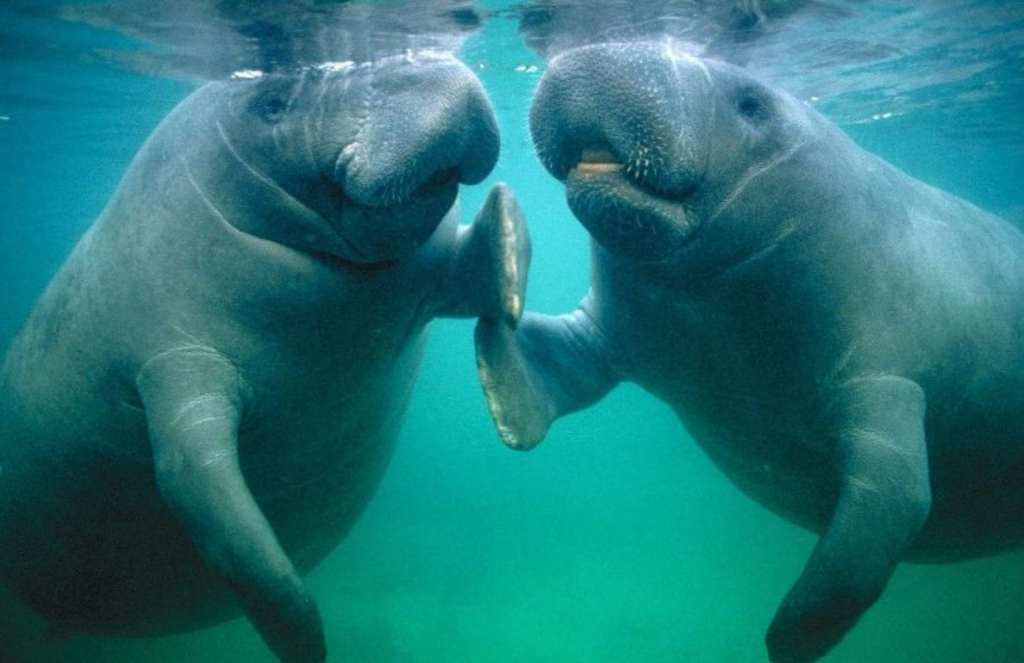You may have heard that we’re in the middle of a mass extinction event that’s going to see the forever demise of thousands of species all over the world. It’s depressing, when you think about it, but between pesticides, deforestation, pollution, and climate change, it can seem inevitable that more and more animals are not going to be able to adapt and survive.
It might make you feel better, then, to realize that some species – even ones that were thought past all hope – have adapted, survived, and come back from the brink.
14. Grizzly bears.
https://www.instagram.com/p/B_8r5jcAZym/
Hunting and habitat loss caused the total population of grizzly bears to dwindle to a handful. There were only 5 remaining communities when they became protected under the Endangered Species Act.
Now, around 2,000 of the wild bears exist, though a 2018 ruling could remove them from the ‘threatened’ list and put the bears at risk once again.
13. Orange-bellied parrot.
https://www.instagram.com/p/-nFwq2s8hv/
In 2017, only three female orange-bellied parrots remained in in the wild, with only 23 total birds arriving at their wilderness breeding site.
Scientists believed the birds had only 5 years left, but suddenly, they turned it around – in 2019, 118 birds were recorded flying north.
12. Blue iguana.
https://www.instagram.com/p/B_C5pg8hXzh/
These pretty lizards live only in the Cayman Islands, and they were declared “functionally extinct” in 2005.
Vigorous breeding programs and a decrease in the island’s feral pets have helped them come back from the brink – around 750 individuals are now alive and well.
11. Schaus swallowtail butterfly.
https://www.instagram.com/p/B0OTEPMFgnV/
The Miami Herald once reported that there were only four of these butterflies to be found (back in 2012).
Two years later, an aggressive breeding program hatched 1,000 larvae. 50 grown butterflies and 20 caterpillars were released into Biscayne National Park and now hundreds can be found in the wild.
10. Brown pelican.
https://www.instagram.com/p/BvUNxFBlJGx/
This pelican survived the feather-craze of the 19th century only to fall prey to environmental chemicals in the 1970s.
The bird is no longer endangered, but like all marine and marine-adjacent life, it faces a constant stream of challenges.
9. Lesser long-nosed bat.
https://www.instagram.com/p/BF1id7NyZH7/
These mammals are vital to pollinating agave (used in tequila), which you would have thought would have been enough to save them on its own. It wasn’t, and in 1998, habitat loss and poisons meant to target rabies-carrying bats, they were declared endangered.
It was removed from the list 29 years later, and now around 200,000 of them live in the wild.
8. Florida panther.
https://www.instagram.com/p/CATxe8vgu6Y/
When the Florida panther was granted federal protection in 1967, there were only 20 left in the wild.
Development, particularly car accidents and other interactions with humans, continues to threaten them, but they around 280 of them have rebounded in the state.
7. Giant panda.
https://www.instagram.com/p/CAKyu0Gnirm/
China has spent years and tons of resources restoring the bamboo forests that the pandas depend on for both food and habitat, and the species does now number around 2000.
That said, the BBC predicts that at least 1/3 of these animals will succumb to climate change.
6. Grey whale.
https://www.instagram.com/p/B6TEybFB6jg/
These whales were nearly hunted to extinction, and though the group in the eastern Pacific continues to struggle, the western group appears to be thriving.
5. California condor.
https://www.instagram.com/p/CAWL6JeJ2SX/
The California condor is the largest bird in North America – it has a wingspan of around 10 feet – and is an important carrion feeder.
Lead poisoning, pesticides, and other factors have landed it on a watch list since 1987, and even with efforts being made as far as breeding and release into the wild, there are only about 12.
4. San Quintin kangaroo rat.
https://www.instagram.com/p/BUTCoptFCfc/
This tiny rodent was thought extinct in 1994 – no one had seen one in the wild since 1986 – but in 2008, researchers in Baja discovered four of them.
Since we know they’re alive, plans are now in place to count and help them continue to thrive.
3. West Indian manatee.
https://www.instagram.com/p/CAVSE-UhHgo/
Manatees are the cows of the sea, but unlike cows, these grass-eating sweethearts have been endangered since 1973.
Habitat loss and boat collisions had caused their numbers to drop to a few hundred, but after concentrated conservation efforts, 6600 individuals were counted in Florida in 2017.
2. Grey wolf.
https://www.instagram.com/p/CAFxX-pobSG/
Humans hunted these animals nearly out of existence, but conservationists have fought hard to bring the number of 300 survivors back up.
A 2013 count found around 4500 wolves living in the United States.
1. Sea otter.
https://www.instagram.com/p/B__talyAHnI/
In 1911, only around 2,000 otters remained after extensive lusting after their fur. Now, around 100,000 exist in the wild – the sea otter is a great success story.
I don’t know if I’m feeling better about the state of the world as a whole, really, but I am cheering for these unlikely survivors!
It’s just another reminder that you can never count a fighter down and out until the very last bell.






